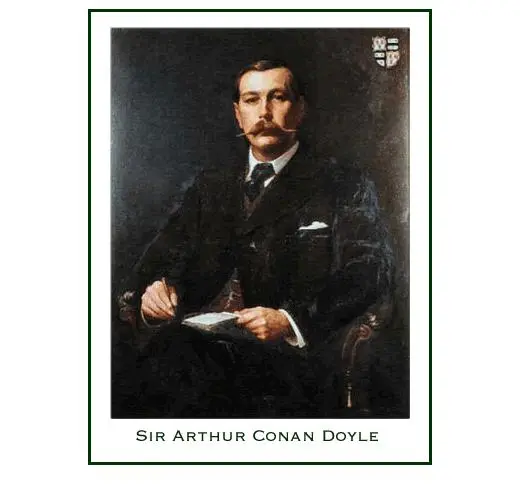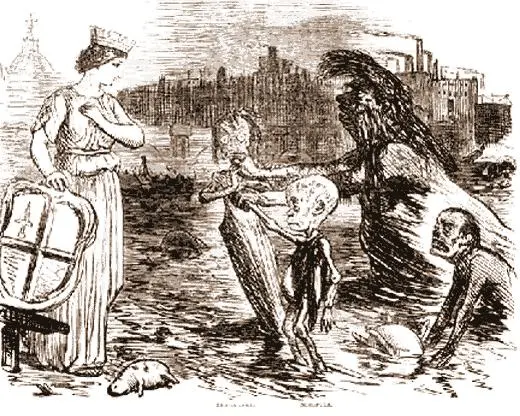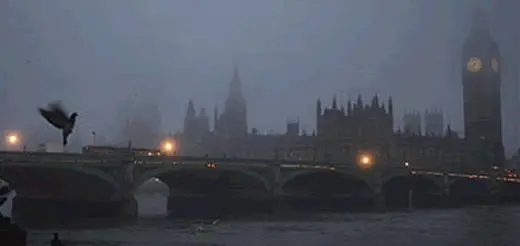The Complete Sherlock Holmes Collection (Illustrated)
For Jim Sheets
International Private Investigator
Sherlock Holmes: Illustrated and Complete, Copyright © 2011 by The Seashell Press. All rights reserved. No part of this book may be used or reproduced in any manner whatsoever without written permission except in the case of brief quotations embodied in critical articles or reviews.
This is the Kindle edition of Sherlock Holmes: Illustrated and Complete, Release 1.02, May 2011. Corrections, comments and suggestions are welcome and may be sent to The Seashell Press at:
 [email protected].
[email protected].
Readers whose suggestions and corrections are incorporated in the next release of this book will receive a refund of their purchase and a free copy of the corrected edition. Thank you for your detecting.
Cover art is by Sidney Paget, colored by L.M. Goode of the Goode Press. From their publication "The Final Problem". (http://www.artintheblood.com)



Introduction
A Study in Scarlet
Mr. Sherlock Holmes
The Science of Deduction
The Lauriston Garden Mystery
What John Rance Had To Tell
Our Advertisement Brings a Visitor
Tobias Gregson Shows What He Can Do
Light in the Darkness
On The Great Alkali Plain
The Flower of Utah
John Ferrier Talks With the Prophet
A Flight for Life
The Avenging Angels
A Continuation of the Reminiscences
 of John Watson, M.D.
of John Watson, M.D.
The Conclusion
The Sign of the Four
The Science of Deduction
The Statement of the Case
In Quest of a Solution
The Story of the Bald-Headed Man
The Tragedy of Pondicherry Lodge
Sherlock Holmes Gives a Demonstration
The Episode of the Barrel
The Baker Street Irregulars
A Break in the Chain
The End of the Islander
The Great Agra Treasure
The Strange Story of Jonathan Small
The Adventures of Sherlock Holmes
A Scandal in Bohemia
 Notes on Scandal in Bohemia
Notes on Scandal in Bohemia
The Red-Headed League
A Case of Identity
The Boscombe Valley Mystery
The Five Orange Pips
The Man with the Twisted Lip
The Adventure of the Blue Carbuncle
The Adventure of the Speckled Band
 Notes on The Speckled Band
Notes on The Speckled Band
The Adventure of the Engineer's Thumb
The Adventure of the Noble Bachelor
The Adventure of the Beryl Coronet
The Adventure of the Copper Beeches
The Memoirs of Sherlock Holmes
Silver Blaze
 Notes on Silver Blaze
Notes on Silver Blaze
The Yellow Face
The Stockbroker's Clerk
The "Gloria Scott"
The Musgrave Ritual
 Notes on The Musgrave Ritual
Notes on The Musgrave Ritual
The Reigate Squires
 Notes on The Reigate Squires
Notes on The Reigate Squires
The Crooked Man
The Resident Patient
The Greek Interpreter
 Notes on The Greek Interpreter
Notes on The Greek Interpreter
The Naval Treaty
The Final Problem
 Notes on The Final Problem
Notes on The Final Problem
The Return of Sherlock Holmes
The Adventure of the Empty House
 Notes on The Empty House
Notes on The Empty House
The Adventure of the Norwood Builder
The Adventure of the Dancing Men
The Adventure of the Solitary Cyclist
The Adventure of the Priory School
The Adventure of Black Peter
The Adventure of Charles Augustus
 Milverton
Milverton
 Notes on Charles Augustus Milverton
Notes on Charles Augustus Milverton
The Adventure of the Six Napoleons
The Adventure of the Three Students
The Adventure of the Golden Pince-Nez
The Adventure of the Missing
 Three-Quarter
Three-Quarter
The Adventure of the Abbey Grange
 Notes on The Abbey Grange
Notes on The Abbey Grange
The Adventure of the Second Stain
 Notes on The Second Stain
Notes on The Second Stain
The Hound of the Baskervilles
Mr. Sherlock Holmes
The Curse of the Baskervilles
The Problem
Sir Henry Baskerville
Three Broken Threads
Baskerville Hall
The Stapletons of the Merripit House
First Report of Dr. Watson
Second Report of Dr. Watson
Extract from the Diary of Dr. Watson
The Man on the Tor
Death on the Moor
Fixing the Nets
The Hound of the Baskervilles
A Retrospection
 Notes on The Hound of the Baskervilles
Notes on The Hound of the Baskervilles
 The Hound on Film
The Hound on Film
The Valley Of Fear
The Warning
Sherlock Holmes Discourses
The Tragedy of Birlstone
Darkness
The People of the Drama
A Dawning Light
The Solution
The Man
The Bodymaster
Lodge 341, Vermissa
The Valley of Fear
The Darkest Hour
Danger
The Trapping of Birdy Edwards
Epilogue
His Last Bow
Preface
The Adventure of Wisteria Lodge
The Adventure of the Cardboard Box
The Adventure of the Red Circle
The Adventure of the Bruce-Partington
 Plans
Plans
 Notes on The Bruce-Partington Plans
Notes on The Bruce-Partington Plans
The Adventure of the Dying Detective
 Notes on The Dying Detective
Notes on The Dying Detective
The Disappearance of Lady Frances Carfax
The Adventure of the Devil's Foot
 Notes on The Devil's Foot
Notes on The Devil's Foot
His Last Bow: Epilog
 Notes on His Last Bow
Notes on His Last Bow
The Case-Book of Sherlock Holmes
Preface
The Adventure of the Illustrious Client
The Adventure of the Blanched Soldier
The Adventure of the Mazarin Stone
The Adventure of the Three Gables
The Adventure of the Sussex Vampire
The Adventure of the Three Garridebs
The Problem of Thor Bridge
The Adventure of the Creeping Man
The Adventure of the Lion’s Mane
The Adventure of the Veiled Lodger
The Adventure of Shoscombe Old Place
The Adventure of the Retired Colourman
Acknowledgements
Title Index
TOC | Title Index

In 1891, Sherlock Holmes was a character very much of his time and place, who appealed to British readers directly by confronting the messy, changeable world they lived in. Rather than dwelling in romance or in an idealized past, as many of Arthur Conan Doyle's other characters did, Holmes was grounded squarely in Victorian London. The Sherlock Holmes mystery stories, written over a forty-year span from 1887 to 1927, represented the good, the bad, and the ugly of Victorian society: its ideals, its accomplishments, and its deepest fears.
Arthur Conan Doyle's birth year, 1859, fell 22 years into Queen Victoria's 64-year reign, a time of unparalleled growth and optimism for the British Empire. Resources and labor taken from colonies worldwide had made England prosper, and the time of serious independence struggles lay in the distant future. Business flourished, technology blossomed, and London grew at a great rate--from one million people to six in the space of a century--creating problems of urban overcrowding familiar to us today: poverty, homelessness, drug abuse, crime. While the great divide between rich and poor and the economic and human strain of maintaining the colonies exacerbated social problems that were as yet insoluble, Victorian Britons, led by Victoria's husband Albert, put their faith in technology and science. The contrasts and conundrums of this fascinating time provided Conan Doyle with the raw material and the backdrop for Sherlock Holmes: a man of science, undistracted by the gentler passions, who moved easily through the disquieting urban space, using his wits to solve its moral and practical dilemmas.
Physically, London could be a place of disturbing contrasts, a cosmopolitan city where the middle class drank tea in comfortable drawing rooms while epidemics of typhoid and cholera ravaged the squalid, overpopulated East End. The putrid Thames River, the city's main source of drinking water, despite the network of open sewers that dumped tons of waste into it daily, carried a reeking cloud of contagion to all levels of society as it meandered through the heart of the city. Since 1844, the government had struggled with various solutions to the sewage problem. In 1858, the year before Conan Doyle was born, the "Great Stink," caused by the unfortunate effects of a hot summer on a sluggish, polluted river, clotted with solid waste, drove thousands out of the city.

Father Thames introducing his offspring to the city of London, Punch 1853
After years of effort, engineer Joseph Bazalgette designed and supervised construction of a sewer system, completed in 1866, that drained sewage away from the Thames and used the ebbing tide to wash it out to sea. London's air was not much cleaner than its water. The burning of coal for heat and cooking caused the greasy yellow "London fog" that Holmes and Watson prowl about in:
In the third week of November, in the year 1895, a dense yellow fog settled down upon London. From the Monday to the Thursday I doubt whether it was ever possible from our windows in Baker Street to see the loom of the opposite houses.
—from "The Bruce Partington Plans"
Watson does not exaggerate; in the worst London fogs, it was impossible to see past your nose.

Inhabitants of London had more to fear from their city than an unhealthy environment. Barely thirty years before Doyle's birth, London was a criminal's paradise. Whole areas of the city were "owned" by criminal groups, and honest citizens hardly dared to walk through certain neighborhoods at night, even armed.
1 comment